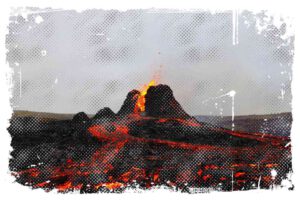Are you wondering about archeological site in Poland? Every year, the realm of science gifts us with new findings. Sure, not all of these discoveries hold immense historical significance, but occasionally we stumble upon real gems. Now, let’s delve into some of the most important archaeological discoveries nestled within Poland.
For those of you fascinated by ancient treasures and the narrative of humanity, I know you’ll be electrified by this. Often, we think about artifacts buried in the sands of the ancient world, but let me tell you, Poland too is a treasure trove, brimming with priceless artifacts.
Some of these are even older than the first evidence of the Piasts, the historical rulers of Poland.

Polish Archaeological Sites And Successes
Polish archaeologists studying early human history can indeed take pride in their remarkable achievements. I can tell you that it was these researchers, based in the country on the river Vistula, who unearthed fragments of the Amazis temple in Egypt.
↳ PRO TIP: Do you like traveling? Then before you buy any ticket or book an attraction, check if it's available in this worldwide Viator Database. You may save a lot of money and time. No need to thank me :)
Allow me to explain further. They also discovered the first royal tomb of a Mayan ruler. And that’s not all! In collaboration with Peruvian researchers, they found the tomb of El Castillo de Huarmey, a site where 63 mummified bodies are preserved.
However, I am sure that these breakthroughs don’t receive the recognition they deserve, making them not so well-known. So, if you want to expand your knowledge, let’s explore some unique Polish spots on the global archaeological map.
Biskupin – A Major Archaeological Site in Poland
Arguably, the most renowned archaeological site in Poland is Biskupin, where a popular Archaeological Museum attracts visitors from around the world. I think it is worth to say that this place is globally famous, thanks to the efforts of the eminent Polish archaeologist, Professor Józef Kostrzewski.

Allow me to present what makes Biskupin so special. Back in 1925, Professor Kostrzewski made some significant discoveries in the local lake and agricultural area.
He found traces of wooden buildings arranged in a structured, defensive settlement, complete with a rampart. This settlement, dating back to 747-722 BC, is a relic of the Lusatian culture.
Sure, this is evidence of ancient human activity in Poland… but it’s not the oldest. If you’re curious about the oldest, we owe the discovery of Europe’s most ancient village to Dr. Marcin Przybyla.
The Oldest Village in Poland – Maszkowice
Eight years ago, Dr. Przybyla initiated research in Maszkowice, on Mount Zyndrama. What did he find there, you ask? A settlement from around 1750 BC, that’s what. This settlement from the early bronze era, is undoubtedly one of the oldest discoveries in this part of Europe.

I can tell you that the research in Maszkowice is far from over. Up to now, the evidence suggests that this was a small village comprising around 20 houses and home to roughly 150 people.
Among the finds, artifacts that reveal connections to Mycenaean culture were discovered, which is fascinating!

The settlement’s fortification is another intriguing feature – a 2-meter thick wall built from enormous stones, some weighing half a ton.
But let’s journey even further back in time. I believe you’ll be interested in what’s next.
A Polish Dinosaur From Krasiejów
We’ve recently uncovered the remains of a Silesian lizard, or as we call it in Poland, the Silesaurus opolensis. It’s quite an exceptional species, unlike any others discovered thus far.

Brace yourself, because this is the first Polish dinosaur skeleton dating back an astounding 230 million years!
Professor Jerzy Dzik, from the Institute of Paleobiology of the Polish Academy of Sciences, led the excavations in Krasiejów. In fact, they didn’t find just one set of bones, but rather a whole herd – about 20 in total.

I think it’s worth saying that this species is special, as in 2012, it was declared the oldest in the world.
The Zawichost – Trinity Treasure
In 2021, the Annopolska Vistula Search Group of the SZANSA Association, along with the „Common Heritage” Association in Opatów, embarked on a search in Zawichost.

What they found was astounding – nearly 2000 silver coins, known as denarii, of Władysław the Exile and Bolesław the Curly.
These coins, most likely buried between 1170 and 1179, were hidden in a small, shallowly buried pot.

I am convinced that you will find it exciting to know that this is the second discovery of such a treasure in Zawichost-Trójca. The previous treasure, primarily consisting of Polish and Saxon cross denarii from the mid-eleventh century, was unearthed back in 1930.
Valley of Death in Chojnice – Nazi Crimes
I think it is worth saying that the Igielskie Field in Chojnice, located on the northern outskirts of the city, holds a dark secret. In 1939, it earned the sinister nickname, the Valley of Death, due to mass executions of the Polish population by Nazi criminals.

In 2020, the Foundation of Friends of the Institute of Archaeology and Ethnology of the Polish Academy of Sciences, under Dr. Dawid Kobiałka’s leadership, initiated an archaeological investigation aiming to reveal the traces of these war crimes.
Their efforts led to the discovery of Mauser rifle shells and several other historical artifacts.
Resuming their work in 2021, based on their previous findings, the team identified the probable execution site and the pyre where the bodies were burned. They found the remains of several hundred victims.

These human bones, collectively weighing over 1000 kg, serve as a somber reminder of the past.
Mysteries of Wrzępia’s Pottery
If you’re interested in pottery, you need to know about Wrzępia. Back in the 90s, while working on the project „Archaeological Photo of Poland”, fragments of resource vessels were unearthed in Wrzępia.

The first traces of pottery production popped up in 1995, but it wasn’t until years later that the true magnitude of this operation was revealed.
In 2019, magnetic surveys exposed around 130 anomalies. Fast forward to 2021, when scientists decided to take a closer look at one of these anomalies. Their work paid off, showing that the magnetic abnorrmality was the remains of pottery kilns dating between the second and fifth centuries AD.

They also discovered fragments of a post structure and a pit filled with more vessel fragments.
Sławoborze – The Lost City
One of the most awe-inspiring archaeological finds of recent years has to be the medieval town of Sławoborze. Analyzing historical texts revealed that the town, which is now a large village, used to be a city.

The first significant traces were found about 2 km from modern Sławoborze – scientists discovered a horseshoe-shaped ditch with remnants of embankments on the inner side. Archival cartographic materials pointed to an oval shape, referred to as Alt Stadt.
As they dug deeper, they found about 350 artifacts connected to the city’s past. These discoveries have opened a new window into the history of Sławoborze, and I think it’s worth saying, there’s likely much more to be uncovered.
Samborowice – Kiln Discovery
Now, if you need a glimpse of an old world, let me tell you about the 2000-year-old kiln discovered in Samborowice. This kiln was used to make ceramic vessels, and it’s believed to have been operated by the Celts, who lived in the southern part of Poland until the beginning of our era.

The study of this well-preserved kiln started in 2020. Inside, they found several hundred remains of ancient ceramic products. I can tell you that it was a sight to behold!
Ełk – Unearthed Treasure
2020 was a year of surprising discoveries, and one that stands out is the treasure found in Ełk. It was the first find of this kind in the city’s history. The discovery was made by the members of the Historical and Exploration Association „Jaćwież” while examining a heap of earth moved during construction work on Wojska Polskiego Street.
Their metal detectors signalled the presence of objects that could be of historical value, and boy were they right! They struck gold, or should I say silver? They unearthed 680 modern silver coins dating back to the seventeenth century.
These coins were not just Polish but also Dutch, Danish, Scottish, and Swedish. I am convifnced that the coins were originally buried in a clay pot as a form of deposit. I believe, it is worth saying that discoveries like these remind us of how history continues to live beneath our feet.
The One-of-a-Kind Egyptian Mummy
Now, I believe you’ll find this quite extraordinary! We’re talking about an Egyptian mummy, most likely discovered in Thebes. At the end of 1826, it was brought to Warsaw by Jan Wężyk-Rudzki.
For a long time, people believed that these were the remains of the priest Hor-Jehuti, mainly due to the hieroglyphs on the coffin and its age.
In 2021, successful radiological exams were performed as part of the Warsaw Mummy Project. They revealed something astonishing – the mummified remains were of a pregnant woman!
The thorough mummification process and the rich collection of amulets found suggest that the woman belonged to the Theban elite. What makes this so special? I am convinced that it’s worth to say that such a discovery has never been made anywhere in the world before!
References:
- https://pl.wikipedia.org/wiki/Kategoria:Polskie_odkrycia_archeologiczne
- https://roadstars.mercedes-benz-trucks.com/pl_PL/magazine/2018/october/interesting-archaeological-discoveries-in-Poland.html
- https://dzieje.pl/tag/odkrycia-archeologiczne




